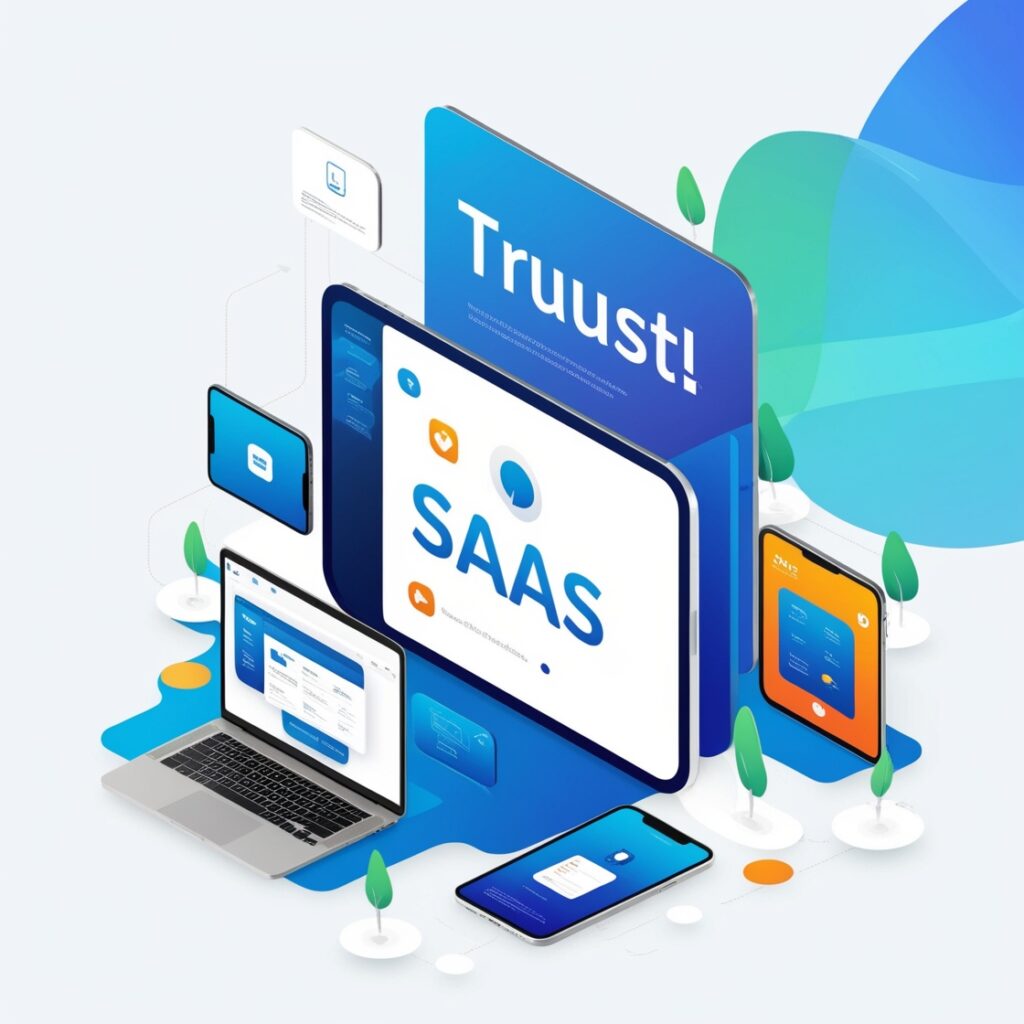The Software as a Service (SaaS) model has revolutionized the way businesses operate. With countless success stories of entrepreneurs building scalable SaaS companies, you might wonder: “Can I build a SaaS product without a tech background?” The answer is yes! Thanks to no-code tools, intuitive platforms, and strategic outsourcing, anyone with a strong idea and determination can create a thriving SaaS product.
In this guide, we’ll break down the process of building a SaaS product step by step, tailored for non-technical founders.
What Is a SaaS Product?
A SaaS product is a cloud-based software application delivered via the internet. Users can access it through a web browser without downloading or installing software. Examples include tools like Slack, Canva, and Trello.
Why Build a SaaS Product?
1. Recurring Revenue: SaaS products typically operate on a subscription model, providing consistent income.
2. Scalability: Once launched, a SaaS can scale to serve thousands of users with minimal additional costs.
3. High Demand: Businesses and individuals rely on SaaS tools for productivity, collaboration, and innovation.
Step-by-Step Guide to Building a SaaS Product
1. Validate Your Idea
Before you start building, ensure there’s demand for your SaaS solution.
• Identify a Problem: What pain point does your product solve?
• Research Your Audience: Define your target market and their needs.
• Test the Market: Use surveys, interviews, or landing pages to gauge interest.
Pro Tip: Tools like Google Trends and AnswerThePublic can help identify trending problems worth solving.
2. Define Your Product’s Core Features
Your SaaS product doesn’t need to be perfect from day one. Focus on the Minimum Viable Product (MVP)—the basic features that solve your audience’s primary problem.
• Create a feature list.
• Prioritize based on user feedback and market demand.
• Avoid overloading your MVP with unnecessary features.
3. Choose No-Code or Low-Code Tools
If you don’t have a tech background, no-code and low-code platforms can help you bring your idea to life:
• Bubble: Build fully functional web apps without coding.
• Outsystems: Perfect for creating scalable enterprise applications.
• Webflow: Ideal for designing and launching visually appealing websites.
• Glide: Create apps directly from spreadsheets.
These platforms allow you to design, test, and iterate your SaaS product without hiring developers.
4. Partner with Developers for Complex Features
For features that go beyond no-code capabilities, consider outsourcing development:
• Hire freelancers on platforms like Upwork or Toptal.
• Collaborate with a development agency for larger projects.
• Use templates or pre-built components to reduce costs.
5. Design a User-Friendly Interface
User experience (UX) can make or break your SaaS product.
• Focus on simplicity and intuitive navigation.
• Use tools like Figma or Adobe XD to prototype your designs.
• Test your interface with real users and gather feedback.
6. Implement Secure Cloud Hosting
Every SaaS product needs reliable hosting to ensure uptime and data security.
• Choose cloud platforms like AWS, Google Cloud, or Microsoft Azure.
• Ensure compliance with data protection laws (e.g., GDPR, CCPA).
• Implement encryption and user authentication for added security.
7. Test Your MVP
Before launching, rigorously test your MVP:
• Conduct functionality testing to ensure all features work as intended.
• Perform usability testing to identify and fix user experience issues.
• Gather beta user feedback to refine your SaaS product.
Marketing Your SaaS Product
Building a great product is only half the battle—you also need to promote it effectively.
1. Create a Landing Page
Design a professional landing page to showcase your product’s value. Include:
• A compelling headline.
• Key benefits and features.
• Testimonials or case studies.
• Clear call-to-actions (e.g., “Sign Up for a Free Trial”).
2. Leverage Content Marketing
Educate your audience and drive traffic with:
• Blog posts targeting keywords like “how to use SaaS for small businesses.”
• Case studies highlighting success stories of your users.
• Tutorials demonstrating your product’s features.
3. Use Paid Advertising
Invest in paid ads on platforms like Google Ads and LinkedIn to reach your target audience.
4. Offer Free Trials
Allow users to experience your SaaS product with a free trial or freemium model.
Scaling Your SaaS Product
Once your SaaS product gains traction, focus on scaling:
• Automate Onboarding: Use tutorials or in-app guides to help users get started.
• Expand Features: Add functionalities based on user feedback.
• Optimize Pricing: Experiment with different pricing tiers to maximize revenue.
• Invest in Customer Support: Provide prompt assistance to retain users.

Benefits of Building a SaaS Product Without a Tech Background
1. Lower Costs: No need to hire a full in-house development team.
2. Faster Time to Market: No-code tools enable rapid prototyping and launching.
3. Focus on Business Strategy: Spend more time on marketing, sales, and customer engagement.
Common Challenges and How to Overcome Them
1. Learning Curve:
• Challenge: No-code tools may seem overwhelming at first.
• Solution: Use tutorials, community forums, and support teams to learn quickly.
2. Limited Customization:
• Challenge: No-code platforms may not support highly complex features.
• Solution: Outsource development for advanced functionalities.
3. Scaling Issues:
• Challenge: Some no-code platforms have scalability limits.
• Solution: Transition to custom development when your user base grows.
What Makes SaaS Products Popular?
Software as a Service (SaaS) products operate on a subscription model, providing users with ongoing access to cloud-based software. They’re popular for several reasons:
1. Accessibility: Users can access SaaS products anytime, anywhere, via the internet.
2. Scalability: With cloud infrastructure, SaaS solutions can handle rapid growth.
3. Recurring Revenue: Subscription models provide steady income streams for businesses.
Step 1: Understand Your Market and Audience
Before jumping into the development process, it’s crucial to validate your idea:
• Identify Problems: What pain point does your SaaS product address?
• Research the Market: Analyze competitors and identify gaps in their offerings.
• Define Your Audience: Who will benefit most from your product? What are their needs?
Pro Tip: Use tools like Google Forms, Typeform, and Pollfish to survey potential customers and gather insights.
Step 2: Choose the Right No-Code or Low-Code Tools
Modern no-code and low-code platforms make building a SaaS product straightforward. Some popular options include:
• Bubble: Build complex web applications with an intuitive drag-and-drop editor.
• Airtable: Perfect for creating database-driven SaaS solutions.
• Adalo: Focused on mobile app creation without code.
• Zapier: Automate workflows and integrate different tools to enhance your product’s functionality.
These platforms are affordable and allow you to create, test, and iterate on your product without hiring developers.
Step 3: Define Your SaaS Product’s MVP
Your Minimum Viable Product (MVP) should focus on solving your audience’s primary problem with essential features. Avoid the trap of overloading your initial product with unnecessary extras.
Key MVP Components:
1. Core Functionality: What is the single most important feature your SaaS should offer?
2. User-Friendly Interface: Focus on simplicity and ease of use.
3. Feedback Mechanism: Include ways for users to share their thoughts.
Step 4: Create a Strong User Experience (UX) Design
Even the best SaaS products can fail if the user experience is poor. Invest time in designing a platform that is visually appealing and easy to navigate.
Key Tips:
• Use design tools like Figma or Canva to prototype your SaaS product.
• Focus on clarity and simplicity in navigation.
• Test your design with potential users to identify pain points early.
Step 5: Secure Your Cloud Hosting
For SaaS products, cloud hosting is critical for performance and data security. Platforms like Amazon Web Services (AWS), Google Cloud, and Microsoft Azure provide scalable solutions for SaaS applications.
Features to Look For in Hosting Services:
• Reliable uptime guarantees.
• Data security and compliance with standards like GDPR.
• Scalability to handle future growth.
Step 6: Develop or Outsource Advanced Features
While no-code tools are powerful, you may need advanced functionality that requires custom development. Here’s how to manage it:
• Hire developers from platforms like Toptal or Fiverr.
• Collaborate with development agencies for complex tasks.
• Use APIs to integrate external services into your product.
Step 7: Test and Iterate
Testing is critical to ensuring your SaaS product performs well and meets user expectations.
• Alpha Testing: Internal testing to identify bugs and usability issues.
• Beta Testing: Release your product to a small group of users for real-world feedback.
• Iterate: Use feedback to refine your product before the official launch.
Step 8: Set Up a Subscription Model
Determine how you’ll charge users for your SaaS product:
1. Freemium: Offer basic features for free and charge for premium upgrades.
2. Tiered Pricing: Create different plans based on user needs.
3. Pay-as-You-Go: Charge users based on usage.
Pro Tip: Platforms like Stripe and PayPal make it easy to integrate payment gateways.
Step 9: Build a Marketing Strategy
No matter how great your product is, you need a solid marketing plan to reach your audience.

Key Channels:
1. Content Marketing: Write SEO-optimized blog posts targeting keywords like “best SaaS tools for small businesses.”
2. Social Media: Share updates and engage with your audience on platforms like LinkedIn, Twitter, and Instagram.
3. Email Campaigns: Nurture leads and convert them with targeted email sequences.
Step 10: Launch and Scale
Once your SaaS product is ready, launch it to your audience:
• Host a webinar or live demo to showcase its features.
• Offer early-bird discounts or incentives for new users.
• Monitor user behavior using tools like Google Analytics and Hotjar.
As you grow, focus on:
• Adding new features based on user demand.
• Optimizing customer support to retain subscribers.
• Expanding your marketing efforts to reach a broader audience.
Challenges You May Face
1. Technical Hurdles: Use outsourcing to overcome limitations.
2. Scaling Issues: Invest in cloud infrastructure for smoother growth.
3. User Retention: Focus on building features that enhance long-term value.
Conclusion
Building a SaaS product without a tech background is entirely achievable with the right tools and strategy. By leveraging no-code platforms, outsourcing when needed, and focusing on delivering value to your users, you can turn your vision into a thriving SaaS business.
Start today, and don’t let a lack of technical skills hold you back from creating the next big SaaS product! Have questions? Share them below—we’re here to help.




Thanks for sharing. I read many of your blog posts, cool, your blog is very good.
Your article helped me a lot, is there any more related content? Thanks! https://accounts.binance.com/hu/register?ref=FIHEGIZ8
I don’t think the title of your article matches the content lol. Just kidding, mainly because I had some doubts after reading the article.
Your article helped me a lot, is there any more related content? Thanks!
Can you be more specific about the content of your article? After reading it, I still have some doubts. Hope you can help me.
Thank you for your sharing. I am worried that I lack creative ideas. It is your article that makes me full of hope. Thank you. But, I have a question, can you help me?
Thank you for your sharing. I am worried that I lack creative ideas. It is your article that makes me full of hope. Thank you. But, I have a question, can you help me?
Thanks for sharing. I read many of your blog posts, cool, your blog is very good. https://www.binance.com/join?ref=P9L9FQKY
Thank you for your sharing. I am worried that I lack creative ideas. It is your article that makes me full of hope. Thank you. But, I have a question, can you help me?
Your point of view caught my eye and was very interesting. Thanks. I have a question for you.
Can you be more specific about the content of your article? After reading it, I still have some doubts. Hope you can help me. https://www.binance.com/join?ref=P9L9FQKY